Dumplings are more than just a meal in China; they represent a rich cultural heritage and a culinary journey that varies greatly from region to region. In this article, we will delve into the fascinating world of dumplings, focusing on the unique styles and flavors found in two of China’s most iconic cities: Beijing and Shanghai. Each city offers a distinct take on this beloved dish, making them a must-visit for food enthusiasts.
Beijing dumplings, known as jiaozi, are celebrated for their diverse fillings and cooking techniques. Traditionally, these dumplings are filled with a variety of ingredients, including minced pork, beef, and vegetables. The versatility in fillings allows for a range of flavors that cater to different tastes.
Creating authentic Beijing dumplings at home is a rewarding experience. Below is a step-by-step guide to help you master the art of making these delicious morsels:
1. Gather essential ingredients: flour, water, and your choice of fillings.2. Prepare the dough by mixing flour and water until smooth.3. Roll out the dough and cut it into small circles.4. Fill each circle with your desired filling and fold to seal.5. Cook by boiling, steaming, or pan-frying.
Shanghai dumplings, particularly the famous soup dumplings or xiao long bao, have gained international acclaim. These dumplings are unique due to their delicate wrappers and the savory broth sealed inside. The experience of biting into a soup dumpling is truly unforgettable, as the hot broth bursts forth with each bite.
Beijing is home to numerous eateries renowned for their dumplings. Here are some must-visit spots:
- Dumpling King – Famous for its variety of fillings and authentic taste.
- Beijing Dumpling Restaurant – A local favorite known for its hand-made dumplings.
- Street Vendors – Don’t miss out on the delicious dumplings offered by street vendors throughout the city.
Shanghai’s dumpling scene is vibrant and diverse, with options ranging from upscale restaurants to bustling street markets. Here are some top recommendations:
- Din Tai Fung – Famous for its perfectly crafted soup dumplings.
- Jia Jia Tang Bao – Known for its authentic and flavorful dumplings.
- Local Markets – Explore markets like Yuyuan Garden for fresh dumplings and a taste of local life.
Dumplings hold a special place in Chinese culture, often associated with family gatherings and celebrations. They symbolize unity and prosperity, making them a staple during festivals such as the Lunar New Year. Families often come together to prepare dumplings, sharing stories and traditions that connect generations.
In conclusion, the journey through the dumpling culture of Beijing and Shanghai unveils a rich tapestry of flavors and traditions. Whether you prefer the hearty jiaozi of Beijing or the delicate soup dumplings of Shanghai, each bite tells a story of culinary heritage and cultural significance.
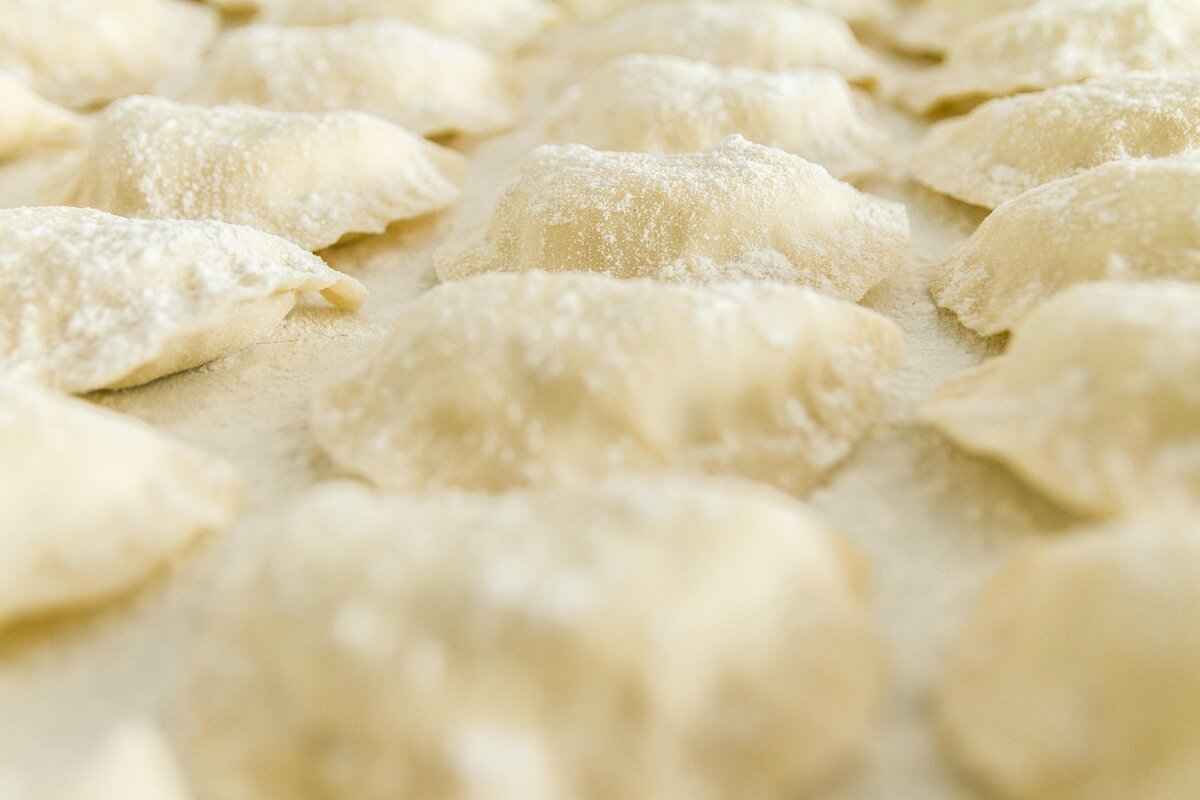
What Makes Beijing Dumplings Unique?
Beijing dumplings, or jiaozi, are a culinary treasure that reflects the rich history and culture of the capital. Their unique appeal lies not only in the diverse fillings but also in the various cooking methods that bring these delightful parcels to life. This exploration will uncover the traditional styles and popular variations that make Beijing dumplings a must-try for anyone visiting the city.
Variety of Fillings
- Meat Fillings: The most common fillings include minced pork, beef, and lamb, often combined with vegetables like cabbage or chives. The flavor profiles are enhanced with seasonings such as ginger, garlic, and soy sauce.
- Vegetarian Options: For those who prefer plant-based alternatives, fillings made from mushrooms, tofu, and a mix of fresh vegetables are equally popular, showcasing the versatility of dumplings.
Cooking Methods
- Boiling: This traditional method results in soft, tender dumplings. Boiled dumplings are often served with a tangy dipping sauce, making them a favorite among locals.
- Steaming: Steamed dumplings maintain their moisture and flavor, resulting in a delicate texture. This method is particularly popular for dumplings filled with juicy meats.
- Pan-Frying: Known as potstickers, these dumplings are first fried to achieve a crispy bottom before being steamed. This combination of textures makes them a delightful option.
Regional Influences
While the essence of Beijing dumplings is consistent, regional influences can introduce unique twists. For instance, in some neighborhoods, you might find dumplings infused with local spices or served with distinct dipping sauces, reflecting the culinary diversity of the city.
Popular Variations
- Wontons: Although different from traditional dumplings, wontons are a beloved variation often filled with shrimp or pork and served in a savory broth.
- Soup Dumplings: These dumplings are filled with a rich broth, offering a burst of flavor with every bite. They are a testament to the culinary ingenuity found in Beijing’s dining scene.
Why Try Beijing Dumplings?
Beijing dumplings are more than just food; they are a symbol of family and tradition. Often made during family gatherings or celebrations, the act of preparing dumplings together fosters a sense of community. Each bite tells a story of cultural heritage and culinary artistry.
In conclusion, the unique characteristics of Beijing dumplings, from their diverse fillings to the various cooking methods, make them an essential part of the city’s culinary landscape. Whether you are a local or a visitor, indulging in these delicious morsels is an experience that should not be missed.
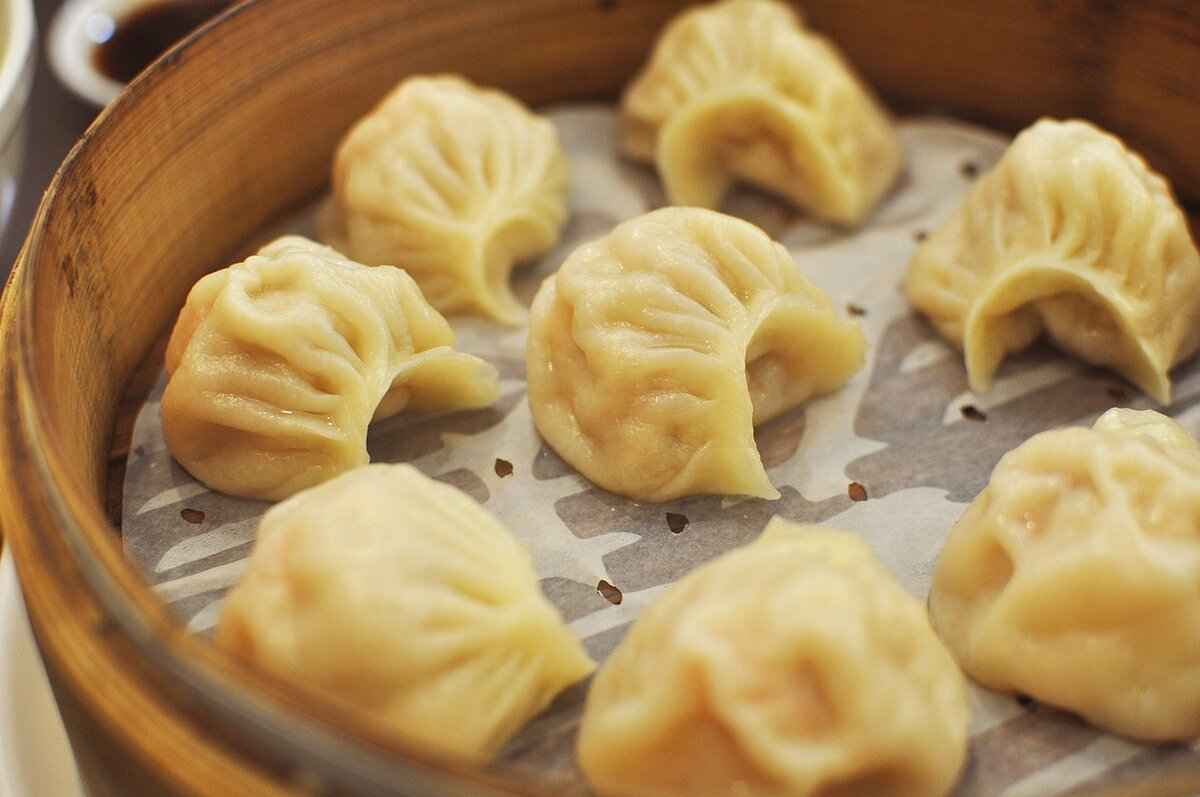
How to Prepare Authentic Beijing Dumplings?
When it comes to authentic Beijing dumplings, the preparation process is an art form that combines tradition with culinary skill. These delightful morsels are not just food; they represent a rich cultural heritage that has been passed down through generations. In this guide, we will walk you through the essential steps to create your own delicious dumplings at home, ensuring you capture the true essence of Beijing’s culinary scene.
Before diving into the preparation, it’s crucial to gather the right ingredients. Here are the key components:
- Dumpling Wrappers: You can buy pre-made wrappers or make your own using flour and water.
- Fillings: Traditional fillings include ground pork, minced beef, or a mix of vegetables like cabbage and mushrooms.
- Seasonings: Soy sauce, ginger, garlic, and sesame oil are essential for flavor.
Follow these steps to prepare your dumplings:
- Prepare the Filling: In a large bowl, mix your choice of meat or vegetables with seasonings. Ensure the mixture is well-combined for even flavor.
- Make the Wrappers: If making from scratch, combine flour and water, knead until smooth, and roll into thin circles. Aim for a diameter of about 3 inches.
- Fill the Dumplings: Place a small spoonful of filling in the center of each wrapper. Be careful not to overfill, as this can cause them to burst during cooking.
- Seal the Dumplings: Fold the wrapper over the filling and pinch the edges together to ensure a tight seal. You can create pleats for a traditional look.
- Cooking Methods: Choose your preferred cooking method—boiling, steaming, or pan-frying. Each method offers a unique texture and flavor.
The cooking method can dramatically alter the taste and texture of your dumplings:
- Boiling: This method results in soft, tender dumplings. Simply drop them into boiling water and cook until they float.
- Steaming: Steamed dumplings maintain moisture and flavor. Use a bamboo steamer lined with cabbage leaves for an authentic touch.
- Pan-Frying: For a crispy exterior, pan-fry your dumplings until golden brown, then add water and cover to steam them through.
No dumpling experience is complete without a delicious dipping sauce. A simple mix of soy sauce, vinegar, and chili oil can elevate your dumplings to new heights. Feel free to experiment with ingredients like minced garlic or scallions for added flavor.
By following these steps and tips, you can create authentic Beijing dumplings that are sure to impress your family and friends. Whether you choose to boil, steam, or pan-fry, the key is to enjoy the process and savor the flavors of this beloved dish.
Essential Ingredients for Beijing Dumplings
When it comes to authentic Beijing dumplings, understanding the key ingredients is essential for achieving the true essence of this beloved dish. The combination of fillings, wrappers, and seasonings defines the character of these dumplings, making them a culinary treasure in Chinese cuisine.
The choice of filling is one of the most critical aspects of dumpling preparation. In Beijing, dumplings are typically filled with a variety of ingredients that cater to both meat lovers and vegetarians. Common meat fillings include:
- Pork – Often mixed with ginger, garlic, and spring onions for a savory flavor.
- Beef – Usually combined with scallions and soy sauce, offering a rich taste.
- Chicken – A lighter option, often paired with vegetables for added texture.
For those preferring vegetarian options, fillings might consist of:
- Chives and Eggs – A classic combination that balances flavors and nutrients.
- Mushrooms – Often used for their umami flavor, enhancing the overall taste.
- Tofu and Vegetables – A healthy mix that provides both protein and crunch.
The dumpling wrapper is just as important as the filling. In Beijing, you can find two primary types of wrappers:
- Thin Wrappers – These are delicate and allow the filling’s flavor to shine through. They are typically used for boiled or steamed dumplings.
- Thick Wrappers – Heartier and more robust, they are often used for pan-fried dumplings, providing a satisfying crunch.
Choosing the right wrapper is crucial, as it influences the overall texture and experience of the dumpling. The thickness of the wrapper can either enhance or overshadow the filling, making it a vital consideration in dumpling preparation.
Seasonings play a pivotal role in elevating the flavors of Beijing dumplings. Some essential ingredients include:
- Soy Sauce – Adds depth and umami to both the filling and as a dipping sauce.
- Sesame Oil – Provides a nutty aroma that complements the fillings.
- Ginger and Garlic – These aromatics are often used to enhance the flavor profile of meat fillings.
Additionally, fresh herbs like cilantro and spring onions are commonly added for a burst of freshness, making each bite more enjoyable.
Achieving the perfect balance of ingredients is crucial for authentic dumplings. This involves:
- Carefully measuring the proportions of filling to wrapper.
- Tasting the filling before sealing the dumplings to ensure the right flavor.
- Experimenting with different combinations of seasonings to find your preferred taste.
By paying close attention to these details, you can create dumplings that are not only authentic but also tailored to your personal palate.
In conclusion, understanding the essential ingredients for Beijing dumplings—fillings, wrappers, and seasonings—can significantly enhance your dumpling-making experience. With a little practice and creativity, you can bring a piece of Beijing’s culinary heritage into your own kitchen.
Popular Fillings: Meat vs. Vegetarian
When it comes to dumplings, the choice of filling can significantly enhance the overall experience. Dumplings are not just a dish; they are a culinary canvas that reflects cultural traditions, regional ingredients, and personal preferences. In this section, we will delve into the popular fillings for dumplings, focusing on both meat-based and vegetarian options, catering to a wide range of tastes and dietary needs.
Meat fillings are often the star of the dumpling show, especially in regions like Beijing. The most common meats used include:
- Pork: Often mixed with garlic, ginger, and green onions, pork fillings are juicy and flavorful.
- Beef: Ground beef can be seasoned with soy sauce and sesame oil, offering a rich, hearty taste.
- Chicken: A lighter option, chicken fillings are often blended with vegetables and spices for added flavor.
Each of these meat fillings can be prepared in various ways, such as steaming, boiling, or pan-frying, which further enhances their flavor profiles.
As dietary preferences evolve, vegetarian dumpling fillings have gained immense popularity. These fillings not only cater to vegetarians but also offer a fresh and vibrant alternative for all food lovers. Some popular vegetarian fillings include:
- Tofu and Vegetable: A combination of tofu, cabbage, and carrots provides a protein-rich and nutritious option.
- Mushroom: Earthy mushrooms mixed with garlic and green onions create a savory filling that mimics the umami flavor found in meat.
- Spinach and Cheese: This filling offers a creamy and rich taste, appealing to those who enjoy a cheesy texture.
Vegetarian fillings can be just as satisfying as their meat counterparts, allowing for creative combinations that highlight seasonal vegetables and herbs.
The choice of filling not only influences the flavor but also the texture and overall experience of eating dumplings. For instance, meat fillings tend to be more savory and hearty, while vegetarian options can offer a lighter, fresher taste. Additionally, the choice of filling can affect the cooking method:
- Steaming: Ideal for both meat and vegetarian dumplings, steaming preserves moisture and enhances flavors.
- Boiling: A common method for meat dumplings, boiling can create a tender texture.
- Pan-Frying: This method gives a crispy bottom, particularly enjoyable with meat fillings.
In conclusion, whether you prefer a traditional meat filling or a vibrant vegetarian option, the variety of dumpling fillings available ensures that there is something for everyone. Each choice tells a story, reflecting the rich culinary heritage of dumplings and inviting you to explore different flavors and textures. So, the next time you indulge in dumplings, consider the filling as a key component of your culinary adventure.
Wrapper Variations: Thin vs. Thick
The choice of dumpling wrapper is a crucial element that can dramatically influence both the texture and flavor of the final dish. In Beijing, the variety of wrappers used reflects the region’s rich culinary heritage, and understanding these differences can enhance your dumpling experience. This section will explore the various types of dumpling wrappers, focusing on how their thickness and composition complement a range of fillings.
Dumpling wrappers are primarily made from flour and water, but the proportions and types of flour used can vary significantly. The two main types of wrappers found in Beijing are:
- Thin Wrappers: These are typically made with all-purpose flour and have a delicate texture. Thin wrappers are ideal for dumplings that require a lighter bite, allowing the filling’s flavors to shine through. They are commonly used for steamed dumplings, where the subtlety of the wrapper enhances the overall dish.
- Thick Wrappers: Made from a higher proportion of flour, thick wrappers provide a chewier texture. They are often used for boiled or pan-fried dumplings, where the robust wrapper can hold up against richer, heartier fillings. The thickness adds a satisfying bite and helps to create a crispy exterior when pan-fried.
The thickness of the wrapper not only impacts texture but also plays a significant role in how flavors are perceived. With thin wrappers, the filling’s taste is more pronounced, making them perfect for lighter fillings such as:
- Vegetable Mixtures: Ingredients like cabbage, mushrooms, and carrots shine through, providing a fresh and vibrant flavor.
- Seafood: Delicate seafood fillings can be highlighted by a thin wrapper, allowing the natural sweetness of the seafood to be the star.
In contrast, thick wrappers are better suited for more robust fillings, such as:
- Meat: Hearty meat fillings, like pork or beef, benefit from the sturdiness of a thick wrapper, which can hold the juices and flavors without breaking.
- Spicy Fillings: The added thickness can temper the heat of spicy fillings, providing a more balanced flavor profile.
When choosing a wrapper for your dumplings, consider the following:
- Delicate vs. Hearty Fillings: Thin wrappers are best for delicate fillings, while thick wrappers are ideal for heartier options.
- Cooking Method: If you plan to steam your dumplings, thin wrappers will work well. For boiling or pan-frying, thick wrappers will provide a satisfying texture.
- Personal Preference: Ultimately, the choice between thin and thick wrappers can come down to personal taste. Experimenting with different combinations can lead to delightful discoveries.
In conclusion, the choice of dumpling wrapper is a vital component that can elevate your culinary experience. By understanding the characteristics of thin and thick wrappers, you can make informed decisions that enhance both the texture and flavor of your dumplings. Whether you prefer the lightness of thin wrappers or the heartiness of thick ones, there’s a perfect match for every filling waiting to be explored.
Cooking Techniques: Boiling, Steaming, or Pan-Frying?
Dumplings are a beloved dish across cultures, particularly in China, where they are prepared in various ways. The cooking technique you choose can significantly influence the taste and texture of your dumplings. In this section, we will explore three main methods: boiling, steaming, and pan-frying, each with its unique characteristics and advantages.
Boiling is one of the most common methods for cooking dumplings, particularly in northern China. This technique allows the dumplings to cook thoroughly and ensures that the filling remains juicy. The process is straightforward:
- Bring a large pot of water to a rolling boil.
- Add the dumplings, ensuring they are not overcrowded.
- Once they float to the surface, let them cook for an additional 2-3 minutes.
Boiling dumplings results in a soft and tender texture, making them a favorite for many. However, they can sometimes lose some flavor to the cooking water, so serving them with a rich dipping sauce is recommended.
Steaming is another popular method that retains the dumpling’s natural flavors and moisture. This technique is especially favored for dumplings with delicate wrappers, such as soup dumplings. Here’s how to steam dumplings:
- Line a steamer basket with parchment paper to prevent sticking.
- Place the dumplings in the basket, ensuring they are spaced apart.
- Steam over boiling water for about 10-15 minutes, depending on the size.
Steamed dumplings are typically juicier than boiled ones, as they retain more moisture. The gentle cooking method also allows the flavors of the filling to shine through, making it an excellent choice for gourmet dumplings.
Pan-frying, or potstickers, offers a delightful contrast in texture. This method combines frying and steaming, resulting in a crispy bottom and a soft top. Here’s how to achieve the perfect pan-fried dumpling:
- Heat oil in a non-stick skillet over medium heat.
- Add the dumplings and fry until the bottoms are golden brown.
- Add a small amount of water to the pan and cover it to steam the dumplings for about 5-7 minutes.
Pan-fried dumplings are crunchy on the outside while remaining tender and flavorful on the inside. This method is particularly popular for its textural contrast and is often served with a soy-based dipping sauce.
The choice of cooking method ultimately depends on your personal preference and the type of dumpling you are preparing. If you prefer a soft and moist dumpling, boiling or steaming may be the best options. On the other hand, if you enjoy a crispy texture, pan-frying is the way to go. Experimenting with different techniques can lead to a delightful dumpling experience that suits your taste.
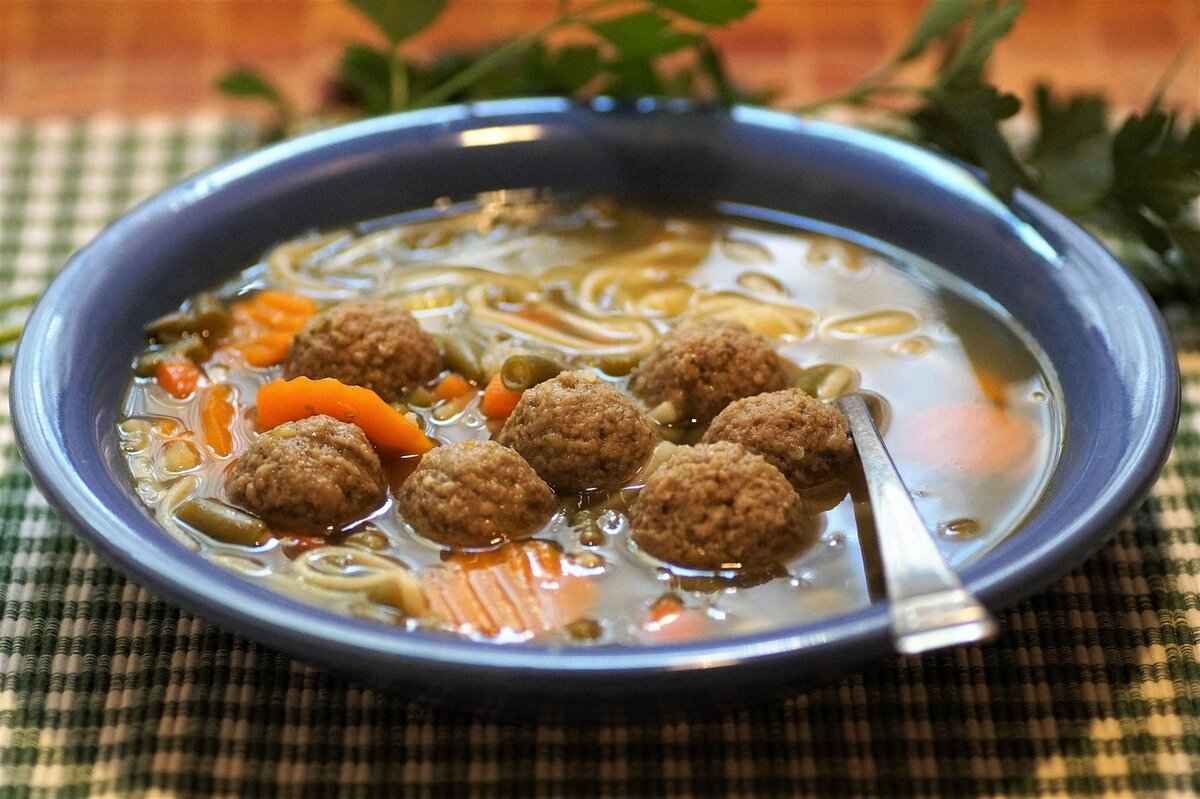
What Distinguishes Shanghai Dumplings?
Shanghai dumplings, particularly the renowned soup dumplings, have captured the hearts and palates of food lovers around the globe. These delightful morsels are celebrated not just for their taste but also for the intricate techniques involved in their preparation. This section delves into the unique characteristics that set Shanghai dumplings apart and their significance in the culinary world.
Soup dumplings, or xiao long bao, are a signature dish of Shanghai cuisine. Unlike traditional dumplings, these delicate parcels are filled with a mixture of seasoned meat and a rich, flavorful broth. The art of creating soup dumplings lies in the skillful combination of ingredients and cooking methods that result in a burst of savory liquid with every bite. The process begins with gelatinized broth, which is cooled and then mixed with the meat filling. When steamed, the broth melts, creating the signature soup inside.
The preparation of Shanghai dumplings is an intricate process that requires precision and expertise. First, a thin dough is rolled out to create wrappers that are both sturdy and pliable. The filling, a blend of pork, ginger, and seasonings, is placed into the center of each wrapper. The key to achieving the perfect soup dumpling lies in the folding technique; the dumplings must be pleated and sealed tightly to prevent any leakage during cooking. Once assembled, the dumplings are placed in a bamboo steamer and cooked to perfection, allowing the flavors to meld and the broth to form.
Shanghai dumplings are distinct from other regional varieties due to their unique flavor profiles and cooking techniques. For instance, while Beijing dumplings often feature thicker skins and a variety of fillings, Shanghai dumplings prioritize a delicate wrapper that complements the rich broth. Additionally, the emphasis on soup-filled dumplings is a hallmark of Shanghai, making them a must-try for culinary enthusiasts.
For those eager to experience authentic Shanghai dumplings, the city offers a plethora of dining options. From upscale restaurants to bustling street stalls, there is no shortage of places to indulge in these culinary delights. Notable establishments such as Din Tai Fung and Jia Jia Tang Bao are renowned for their expertly crafted soup dumplings, drawing both locals and tourists alike.
Indeed, Shanghai dumplings come in various forms and flavors. While the classic pork soup dumpling is the most popular, variations include crab meat, shrimp, and even vegetarian options. Each variation offers a unique twist on the traditional recipe, showcasing the versatility of this beloved dish. Additionally, some establishments experiment with different dipping sauces, enhancing the overall flavor experience.
Dumplings play a significant role in Shanghai’s culinary culture, often associated with family gatherings and celebrations. They symbolize unity and prosperity, making them a staple during festive occasions. The act of making dumplings together is a cherished tradition, fostering connections among family members and friends.
In conclusion, the allure of Shanghai dumplings, particularly soup dumplings, lies in their intricate preparation, unique flavors, and cultural significance. As they continue to gain international acclaim, these delectable treats remain a testament to Shanghai’s rich culinary heritage.
The Art of Soup Dumplings
Soup dumplings, known as “xiaolongbao,” are a culinary treasure of Shanghai, celebrated for their unique combination of delicate wrappers and savory broth. These dumplings are not just a dish; they represent a rich tradition and a meticulous art form that has been perfected over generations. In this section, we will explore the intricate process of making these delightful dumplings, revealing the secrets that make them a hallmark of Shanghai cuisine.
Soup dumplings are small, steamed dumplings filled with a mixture of minced pork and a flavorful broth. The magic lies in the broth, which is typically made from simmering pork bones and gelatine, allowing it to solidify when cooled. When steamed, the gelatine melts, creating a delicious soup inside the dumpling. This unique feature is what sets soup dumplings apart from other types of dumplings.
The process of making soup dumplings is intricate and requires skill and precision. Here’s a breakdown of the essential steps:
- Preparing the Broth: The first step involves simmering pork bones for several hours to create a rich broth. Once cooled, the broth is mixed with gelatine and then refrigerated until it solidifies.
- Making the Dough: The dough for the dumpling wrappers is made from flour and water. It is kneaded until smooth and then rolled out into thin circles.
- Filling the Dumplings: A small amount of minced pork is placed in the center of each wrapper, along with a cube of the solidified broth. The dumpling is then carefully pleated and sealed.
- Steaming: The dumplings are placed in a bamboo steamer lined with parchment paper to prevent sticking and are steamed for about 8-10 minutes.
The popularity of soup dumplings can be attributed to their unique flavor and texture. The contrast between the thin, delicate wrapper and the rich, savory broth creates a delightful eating experience. Additionally, the skill involved in their preparation has made them a sought-after dish in many restaurants around the world.
When visiting Shanghai, there are several renowned establishments where you can savor authentic soup dumplings:
- Din Tai Fung: Famous for its meticulous preparation, this restaurant is a must-visit for soup dumpling enthusiasts.
- Jia Jia Tang Bao: Known for its fresh ingredients and traditional recipes, this spot offers some of the best soup dumplings in the city.
- Yang’s Fried Dumplings: While primarily known for fried dumplings, they also serve delicious soup dumplings that are worth trying.
To fully enjoy soup dumplings, follow these tips:
- Use a Spoon: Place the dumpling on a spoon to catch any broth that may escape.
- Take a Small Bite: Puncture the dumpling gently to release the steam and let it cool slightly before taking a bite.
- Pair with Dipping Sauce: A mixture of soy sauce, vinegar, and ginger enhances the flavor of the dumplings.
In conclusion, soup dumplings are more than just a dish; they are a celebration of Shanghai’s culinary heritage. Their intricate preparation and delightful taste make them a favorite among locals and tourists alike. Whether you are enjoying them in a bustling restaurant or at a street vendor, the experience of savoring soup dumplings is truly unforgettable.
Regional Variations: Shanghai vs. Other Cities
When it comes to dumplings, Shanghai stands out with its unique characteristics that set it apart from other cities in China. While dumplings are a beloved staple across the nation, Shanghai’s offerings are particularly renowned for their delicate flavors and intricate preparation methods. This section delves into the regional variations that define Shanghai dumplings, highlighting the impact of local ingredients and cooking styles.
Shanghai dumplings, especially the famous soup dumplings (小笼包), are celebrated not just for their taste but also for their artistry. These dumplings are filled with a rich, savory broth that bursts in your mouth with each bite. The use of high-quality, locally sourced ingredients plays a crucial role in achieving this unique flavor profile. For instance, the meat used is often a blend of pork and gelatin, which melts during the steaming process, creating that coveted soup inside the dumpling.
Shanghai’s culinary scene is heavily influenced by the region’s abundant resources. The city’s proximity to the sea means that fresh seafood often finds its way into dumpling fillings, offering a delightful twist on traditional recipes. Ingredients like crab meat and shrimp are popular choices, adding a distinct flavor that is hard to replicate elsewhere.
In Shanghai, the preferred cooking method for dumplings is steaming, which allows the flavors to meld beautifully while keeping the dumplings tender. This technique also ensures that the dumplings maintain their shape, a crucial aspect of their presentation. Unlike other regions where pan-frying or boiling might be more common, the emphasis on steaming in Shanghai highlights the city’s commitment to preserving the integrity of its dumplings.
While cities like Beijing and Guangzhou offer their own unique dumpling styles, the differences are striking. Beijing dumplings are typically larger and often served with a variety of dipping sauces, focusing on a mix of meat and vegetables. In contrast, Shanghai dumplings are smaller and more delicate, with a focus on the broth-filled experience. This difference in size and preparation reflects the broader culinary philosophies of each region.
Another key distinction lies in the flavor profiles. Shanghai dumplings tend to have a slightly sweeter taste, often due to the use of soy sauce and ginger in the fillings. This sweetness contrasts with the more savory and robust flavors found in dumplings from northern regions. The balance of flavors is essential in Shanghai cuisine, where each ingredient is chosen to complement the others.
In addition to flavor, the presentation of Shanghai dumplings is an art form in itself. They are typically served in bamboo steamers, which not only preserve warmth but also enhance the visual appeal. The delicate pleats of the dumplings are a testament to the skill of the chefs, making them as much a feast for the eyes as for the palate.
For those eager to experience these culinary delights, numerous restaurants and street vendors in Shanghai offer authentic dumpling experiences. From upscale dining establishments to bustling street markets, the options are plentiful. Trying different variations of Shanghai dumplings can provide a deeper understanding of the region’s rich culinary heritage.
In conclusion, Shanghai dumplings are a testament to the city’s unique culinary identity. By exploring local ingredients, cooking methods, and flavor profiles, one can appreciate the distinct characteristics that make Shanghai dumplings a beloved dish both locally and internationally.
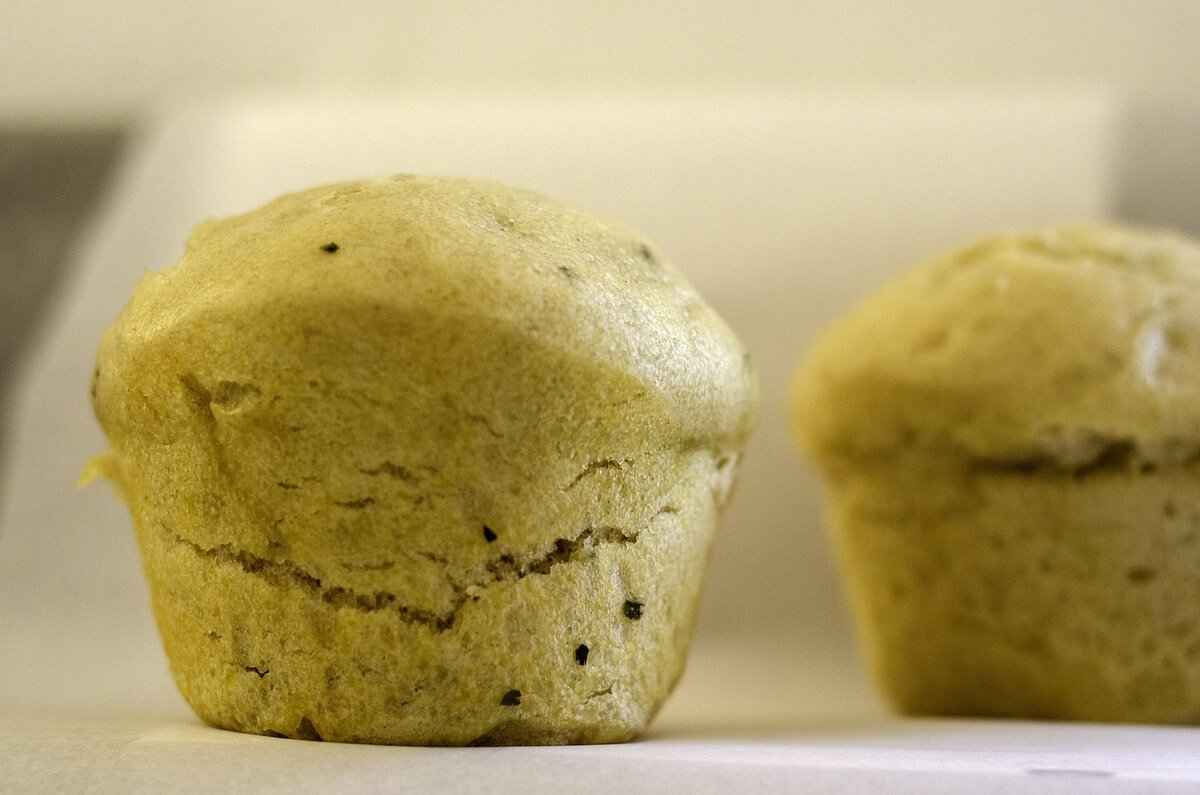
Where to Find the Best Dumplings in Beijing?
Beijing is a culinary paradise, especially for dumpling enthusiasts. The city is home to a plethora of eateries, ranging from high-end restaurants to bustling street vendors, all offering a unique take on this beloved dish. In this guide, we will explore where to find the best dumplings in Beijing, ensuring you experience the authentic flavors that have made these morsels a staple in Chinese cuisine.
For those seeking an elevated dining experience, Beijing boasts several renowned dumpling restaurants that are a must-visit. Here are some of the top picks:
- Dumpling King – Famous for its extensive menu featuring over 50 types of dumplings, this restaurant offers both traditional and innovative fillings, making it a favorite among locals and tourists alike.
- Jiaozi Restaurant – Known for its authentic flavors, this eatery specializes in handmade dumplings that are prepared fresh daily. Their pork and chive dumplings are particularly popular.
- Little Dumpling – This cozy spot is famous for its soup dumplings, which are filled with a savory broth that bursts with flavor. It’s a must-try for anyone visiting Beijing.
While restaurants offer a refined dining experience, street food is where you can truly immerse yourself in local culture. Here are some of the best street vendors known for their dumplings:
- Wangfujing Snack Street – This bustling area is filled with various food stalls, where you can find delicious dumplings cooked to order. The atmosphere is lively, making it a great spot to enjoy an authentic Beijing experience.
- Nanluoguxiang – A popular hutong area, Nanluoguxiang features numerous vendors selling dumplings among other delicacies. Be sure to try the fried dumplings, which are crispy on the outside and soft on the inside.
- Qianmen Street – This historic street is lined with food stalls offering a variety of dumplings. The vendors here are known for their traditional recipes that have been passed down through generations.
The dumplings in Beijing are distinguished by their variety of fillings and cooking techniques. From pork and cabbage to vegetarian options, there’s something for everyone. The dumplings can be boiled, steamed, or pan-fried, each method offering a unique texture and flavor profile. This diversity is what makes Beijing dumplings a culinary highlight.
Choosing the right filling can significantly enhance your dumpling experience. Popular fillings include:
- Meat Fillings: Traditional options like pork, beef, and chicken are often seasoned with garlic, ginger, and soy sauce.
- Vegetarian Fillings: Options such as mushrooms, tofu, and various vegetables cater to those seeking meat-free alternatives.
As you explore the dumpling scene in Beijing, you’ll discover that each restaurant and vendor has its own secret recipes and techniques, making every dumpling experience unique. Whether you dine at a high-end restaurant or grab a quick bite from a street vendor, the dumplings of Beijing promise to delight your taste buds.
Must-Visit Dumpling Restaurants
Exploring the culinary landscape of Beijing, particularly its dumpling scene, is an adventure that every food lover should embark upon. The city is renowned for its rich history and diverse culinary offerings, especially dumplings, which are a staple of Chinese cuisine. In this section, we will highlight some of the in Beijing, showcasing their signature dishes and unique dining atmospheres.
Beijing is home to a plethora of dumpling eateries, each offering a unique take on this beloved dish. Here are some of the top recommendations:
- Dumpling King
This restaurant is famous for its expansive menu featuring over 20 different types of dumplings. From pork and chive to vegetable and seafood options, Dumpling King caters to all tastes. The vibrant atmosphere and friendly staff make it a great place for families and groups.
- Jiaozi Restaurant
Known for its traditional approach, Jiaozi Restaurant offers a cozy dining experience. Their boiled dumplings are a highlight, served with a variety of dipping sauces that enhance the flavors. The rustic decor adds to the authentic Chinese dining experience.
- Wangfujing Snack Street
A must-visit for street food enthusiasts, this bustling location offers a range of dumplings from various vendors. Here, you can find fried dumplings and steamed buns that are both affordable and delicious. The lively atmosphere makes it a perfect spot to immerse yourself in local culture.
- Din Tai Fung
Although originally from Taiwan, Din Tai Fung has made a name for itself in Beijing with its world-famous soup dumplings. The meticulous preparation and presentation are unmatched, making it a favorite among locals and tourists alike. Reservations are recommended due to its popularity.
- Qingfeng Steamed Dumpling Shop
This establishment is celebrated for its steamed dumplings filled with succulent pork and aromatic herbs. The casual setting and quick service make it an ideal spot for a quick bite. Don’t forget to try their vinegar dipping sauce for an added kick!
Each of these restaurants offers a unique experience, whether it’s the variety of dumpling fillings, the cooking techniques used, or the overall dining atmosphere. For instance, the bustling energy of Wangfujing Snack Street provides an authentic street food experience, while the refined ambiance of Din Tai Fung elevates dumpling dining to an art form. The combination of traditional recipes and modern interpretations at these venues ensures that there is something for everyone.
When visiting these dumpling hotspots, consider pairing your meal with traditional Chinese tea to enhance the flavors. Additionally, don’t hesitate to ask the staff for their recommendations on the best dumplings to try. Engaging with the local culture through food is one of the most rewarding aspects of dining in Beijing.
In summary, indulging in dumplings at these must-visit restaurants not only satisfies your taste buds but also enriches your understanding of Beijing’s culinary heritage. Each bite tells a story, making your culinary adventure truly unforgettable.
Street Food Dumplings: A Local Favorite
Street food dumplings are not just a meal in Beijing; they are a vibrant part of the city’s cultural tapestry. As you wander through the bustling streets, the tantalizing aroma of freshly cooked dumplings wafts through the air, inviting locals and tourists alike to indulge in this beloved culinary delight. Street vendors, often family-run, serve up these affordable and delicious morsels, offering a unique glimpse into the daily life of Beijingers.
The popularity of street dumplings in Beijing can be attributed to their convenience and variety. With an array of fillings ranging from traditional pork and chive to innovative vegetarian options, there is something to satisfy every palate. Street vendors often prepare dumplings on-site, ensuring that they are served hot and fresh, which adds to their appeal.
- Wangfujing Snack Street: This bustling area is famous for its diverse food offerings, including dumplings. Vendors here serve both steamed and boiled dumplings, allowing you to choose your preferred style.
- Qianmen Street: Known for its historical significance, Qianmen is lined with street food vendors offering authentic Beijing dumplings. This is a perfect spot to enjoy your meal while soaking in the local culture.
- Local Markets: Explore local markets like Sanyuanli Market, where you can find vendors selling handmade dumplings. These markets often provide a more authentic experience, as you interact with the locals and learn about their culinary traditions.
Street dumplings in Beijing are often characterized by their handmade wrappers and generous fillings. The wrappers are typically thinner than those found in restaurants, allowing the flavors of the filling to shine through. Vendors pride themselves on their unique recipes, often passed down through generations, which adds a personal touch to each dumpling.
Preparation methods for street dumplings vary, but they generally fall into a few categories:
- Boiling: A popular method that results in soft, tender dumplings. Vendors often serve them with a side of dipping sauce for added flavor.
- Steaming: This method preserves the moisture of the filling, making for a juicy bite. Steamed dumplings are typically served in bamboo baskets, adding an authentic touch.
- Pan-frying: For those who enjoy a crispy texture, pan-fried dumplings are a favorite. The bottom is seared until golden brown, while the top remains soft and fluffy.
When exploring the street food scene, be sure to try:
- Pork and Cabbage Dumplings: A classic filling that combines the savory taste of pork with the crunch of fresh cabbage.
- Beef and Onion Dumplings: A hearty option that is both filling and flavorful, perfect for a satisfying meal.
- Vegetarian Dumplings: Often filled with mushrooms, tofu, and seasonal vegetables, these dumplings cater to those seeking a lighter option.
Street food dumplings in Beijing are more than just a quick bite; they are a cultural experience that connects you to the heart of the city. Whether you are a local or a visitor, indulging in these delightful dumplings is an essential part of experiencing Beijing’s vibrant food culture.
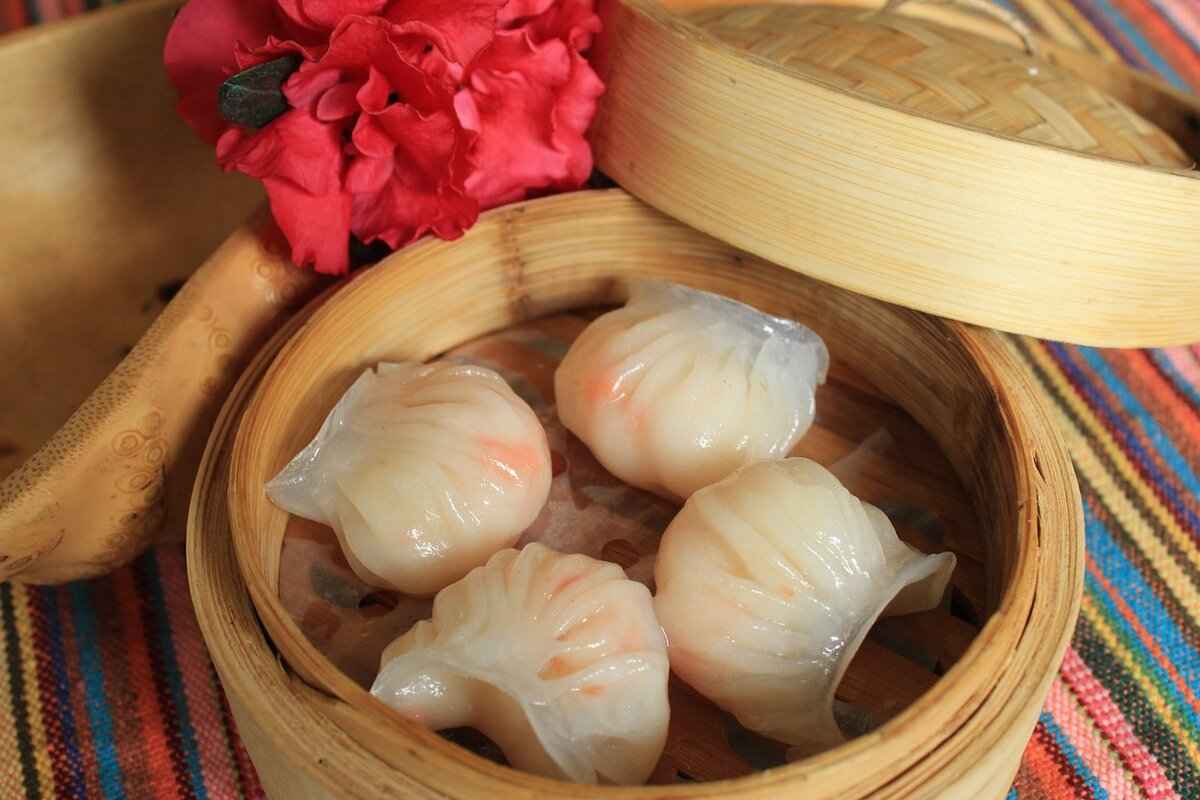
How to Experience Shanghai’s Dumpling Scene?
Shanghai’s dumpling scene is vibrant and diverse, offering a culinary experience that caters to every taste. From the upscale dining establishments that showcase innovative takes on traditional recipes to the bustling street markets where flavors abound, there is something for everyone. This guide will navigate you through the best places to enjoy dumplings in Shanghai, ensuring you savor every moment of this gastronomic adventure.
When it comes to dumplings, Shanghai is a treasure trove of options. Whether you’re in the mood for classic soup dumplings or adventurous fusion flavors, the city has it all. Here’s a breakdown of the top spots you shouldn’t miss:
- Din Tai Fung – Renowned for its expertly crafted soup dumplings, this international chain originated in Taiwan but has made a significant mark in Shanghai. The delicate wrappers and rich broth are a must-try.
- Jia Jia Tang Bao – A local favorite, this eatery is famous for its soup dumplings filled with various flavors, including pork, crab, and even vegetarian options. The casual setting adds to its charm.
- Yang’s Fry-Dumpling – If you’re looking for a crispy twist, head to Yang’s for their pan-fried dumplings, which are golden on the outside and juicy on the inside. A perfect street food experience!
To truly immerse yourself in Shanghai’s dumpling culture, visiting local markets is essential. These vibrant hubs not only offer fresh dumplings but also an opportunity to interact with local vendors and experience the city’s culinary heartbeat. Here are some notable markets:
- Yuyuan Garden Bazaar – This bustling market is a great place to sample various dumplings while soaking in the historic atmosphere. The dumpling stalls here are often packed with locals and tourists alike.
- Qipu Road Clothing Market – While primarily a shopping destination, the food stalls here serve some of the best street dumplings in the city. A hidden gem for those willing to explore!
- Wujiaochang Market – Known for its diverse food offerings, this market is a fantastic spot to try a variety of dumplings, from traditional to modern interpretations.
Shanghai dumplings, particularly the famous soup dumplings, are celebrated worldwide for their unique characteristics. The thin, delicate wrappers encase a savory broth and flavorful filling, creating a delightful burst of flavor with each bite. The art of making these dumplings requires precision and skill, often involving a meticulous process of folding and steaming that has been perfected over generations.
Aside from the classic soup dumplings, Shanghai offers a variety of dumpling styles that reflect the city’s culinary diversity:
- Sheng Jian Bao – These pan-fried buns are filled with pork and broth, providing a delightful contrast between crispy and juicy textures.
- Chive Dumplings – A vegetarian option that highlights the fresh flavors of chives, often paired with a tangy dipping sauce.
- Sweet Dumplings – For those with a sweet tooth, try the dessert dumplings filled with red bean paste or sesame, providing a delightful end to your meal.
Exploring Shanghai’s dumpling scene is not just about the food; it’s about experiencing the culture and traditions that surround this beloved dish. With each bite, you’ll discover a story that connects you to the heart of Shanghai.
Top Restaurants for Dumplings in Shanghai
When it comes to dining in Shanghai, the city is a paradise for dumpling enthusiasts. With a rich culinary heritage, Shanghai offers a variety of dumpling styles that reflect its unique culture and history. From traditional soup dumplings to innovative modern interpretations, the city is home to numerous restaurants that cater to every taste. Below, we highlight some of the best restaurants known for their exceptional dumpling offerings.
- Din Tai Fung – Renowned for its soup dumplings, Din Tai Fung has become a global phenomenon. Each dumpling is meticulously crafted, ensuring a burst of flavor with every bite. The restaurant’s commitment to quality and consistency makes it a top choice for both locals and tourists.
- Jia Jia Tang Bao – This eatery is famous for its steamed soup dumplings. With a variety of fillings, including crab and pork, Jia Jia Tang Bao provides an authentic experience that captures the essence of Shanghai’s dumpling culture.
- Yang’s Dumplings – Known for its pan-fried dumplings, Yang’s Dumplings offers a delightful crunch that contrasts perfectly with the juicy filling inside. This casual dining spot is a favorite among locals looking for a quick and satisfying meal.
- Nanxiang Steamed Bun Restaurant – Located in the historic Yuyuan Garden, this restaurant is famous for its traditional Xiaolongbao (soup dumplings). The rich broth and tender wrapper make it a must-visit for anyone wanting to experience authentic Shanghai dumplings.
- dumpling house – A hidden gem, this restaurant focuses on innovative dumpling creations that push the boundaries of traditional flavors. From truffle-infused fillings to fusion options, it’s a place for adventurous eaters.
The popularity of these restaurants can be attributed to several factors:
- Quality Ingredients: Each restaurant prioritizes fresh, high-quality ingredients, ensuring that every dumpling is bursting with flavor.
- Expert Techniques: Skilled chefs employ traditional techniques to prepare dumplings, preserving the authenticity of each dish while also experimenting with new flavors.
- Ambiance: Many of these establishments offer a vibrant atmosphere, making them perfect for both casual dining and special occasions.
To truly savor dumplings in Shanghai, consider the following tips:
- Pair with Vinegar: A common practice is to dip dumplings in a mixture of soy sauce and vinegar, enhancing their flavor.
- Share with Friends: Dumplings are often enjoyed in groups, so order a variety and share them among friends to experience different flavors.
- Visit During Off-Peak Hours: To avoid long waits, try visiting these popular spots during off-peak hours, such as mid-afternoon.
Whether you’re a first-time visitor or a seasoned dumpling aficionado, Shanghai’s diverse dining scene offers something for everyone. With its blend of tradition and innovation, the city continues to be a culinary destination for dumpling lovers around the world.
Exploring Local Markets for Authentic Flavors
When it comes to experiencing the vibrant flavors of a city, local markets offer an unparalleled glimpse into its culinary soul. In the bustling streets of Shanghai, these markets are not just places to buy food; they are cultural hubs where locals gather, share stories, and celebrate their heritage. This section will explore some of the best local markets in Shanghai where you can discover fresh dumplings while interacting with friendly vendors.
Visiting local markets is essential for anyone looking to immerse themselves in the authentic culinary landscape of Shanghai. Here, you can find a variety of dumplings, each with unique flavors and preparation styles. Interacting with local vendors adds a personal touch to your experience, as they often share insights about their culinary traditions and the ingredients they use.
- Yuyuan Garden Market: Nestled in the heart of Shanghai, this market is famous for its traditional dumplings. Vendors here offer a range of dumplings, including the iconic soup dumplings, which are a must-try.
- Jing’an Temple Market: This bustling market is known for its diverse food offerings. You can find stalls selling freshly made dumplings, where the vendors are eager to share their cooking techniques and secret recipes.
- Qibao Ancient Town Market: A little off the beaten path, this market offers a more traditional atmosphere. Here, you can sample dumplings made from family recipes passed down through generations.
As you wander through the vibrant stalls, the aroma of freshly steamed dumplings fills the air. Most vendors prepare their dumplings on-site, ensuring that you enjoy them at their freshest. You can expect to find:
- A Variety of Fillings: From classic pork and chive to innovative vegetarian options, each vendor has their specialty.
- Cooking Demonstrations: Many vendors are happy to show you how they prepare their dumplings, offering a behind-the-scenes look at this culinary art.
- Sampling Opportunities: Don’t hesitate to ask for a taste! Many vendors will offer small samples to help you decide which dumplings to purchase.
One of the highlights of visiting these markets is the chance to engage with local vendors. Many of them are passionate about their craft and love sharing stories about their food. Here are some tips for interacting with them:
- Ask Questions: Inquire about the ingredients used and the history behind their dumplings.
- Be Respectful: Show appreciation for their craft and the hard work that goes into making each dumpling.
- Learn a Few Local Phrases: Knowing simple phrases in Mandarin can enhance your experience and create a friendly atmosphere.
In conclusion, exploring local markets in Shanghai is an enriching experience that goes beyond just tasting delicious dumplings. It allows you to connect with the heart of the city, its people, and its culinary traditions. So, whether you’re a food enthusiast or a curious traveler, make sure to include local markets in your itinerary for an unforgettable culinary adventure.
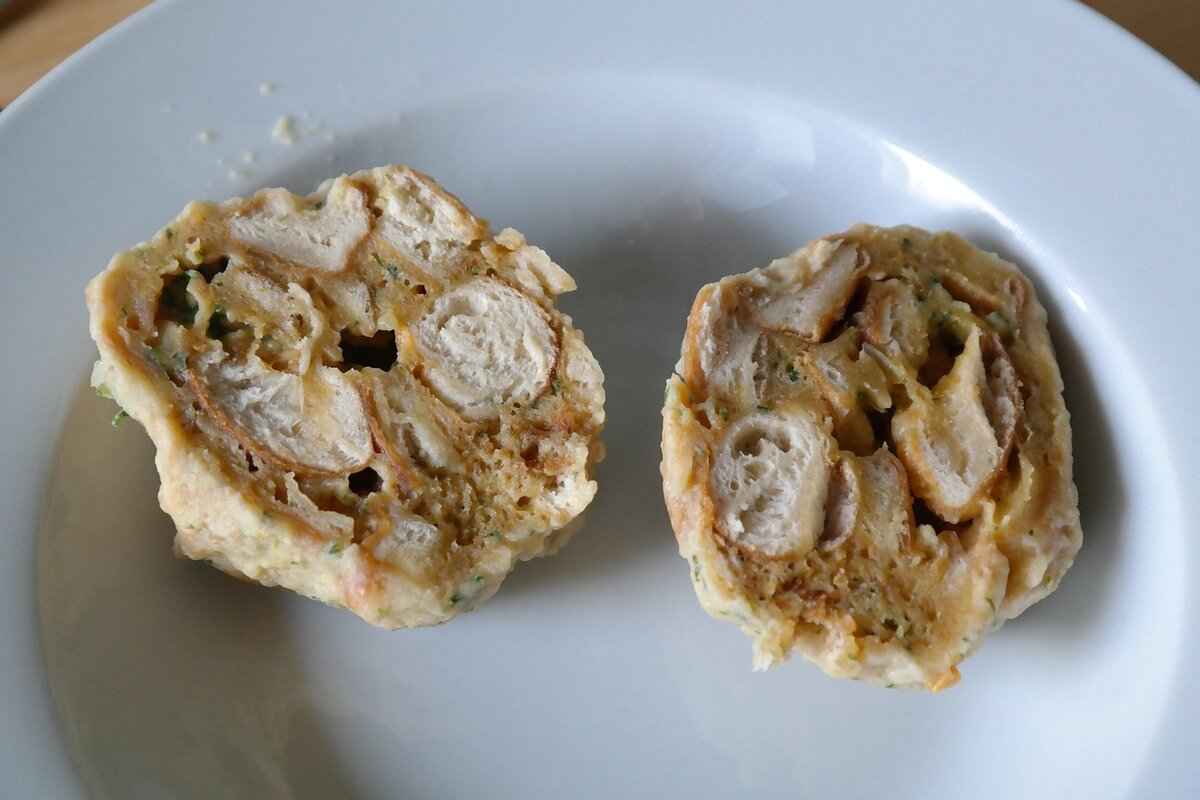
What Are the Cultural Significances of Dumplings?
Dumplings are much more than just a delightful culinary creation in Chinese culture; they represent a rich tapestry of tradition, family bonding, and celebration. Their significance transcends the plate, embodying values and customs that have been passed down through generations.
In China, dumplings are a staple during major festivals, most notably during the Lunar New Year. They are believed to symbolize prosperity and wealth, as their shape resembles ancient Chinese gold ingots. Families gather to prepare and enjoy dumplings together, reinforcing the idea of unity and collective joy. The act of making dumplings is often filled with laughter and storytelling, making it a cherished ritual that strengthens familial bonds.
Making dumplings is a time-honored tradition in many Chinese households. Families often come together, with each member contributing to the preparation process. From rolling the dough to selecting fillings, this collaborative effort fosters a sense of belonging and continuity. Children learn valuable skills and stories from their elders, ensuring that cultural practices are preserved. The experience of crafting dumplings is not only about the food itself but also about creating memories that last a lifetime.
Dumplings are a common feature at social gatherings, whether it be a family reunion, a birthday celebration, or a friendly get-together. Serving dumplings creates an atmosphere of hospitality and warmth. They are often shared among guests, symbolizing friendship and community. The variety of fillings available allows hosts to cater to different tastes and dietary preferences, making dumplings a versatile choice for any occasion.
Dumplings serve as a culinary representation of regional identities across China. Different areas have their unique styles and variations, reflecting local ingredients and cultural influences. For instance, Northern dumplings are typically thicker and heartier, while Southern dumplings may be lighter and more delicate. This diversity showcases the rich cultural heritage of China and allows individuals to connect with their roots through food.
In recent years, chefs and home cooks alike have begun to experiment with dumpling recipes, incorporating global flavors and innovative techniques. From fusion dumplings that blend traditional Chinese flavors with international cuisines to vegetarian and vegan options, the evolution of dumplings reflects changing dietary preferences and culinary creativity. This modern twist on a classic dish allows dumplings to remain relevant in contemporary culinary scenes while still honoring their traditional roots.
In summary, dumplings hold profound cultural significance in Chinese society, acting as a symbol of prosperity, family unity, and community. Their role in festivals, family traditions, and social gatherings highlights their importance beyond mere sustenance. As culinary traditions continue to evolve, dumplings remain a beloved staple that connects people to their heritage and to one another.
Dumplings in Festivals and Celebrations
Dumplings are not just a culinary delight; they are also a significant part of Chinese culture, particularly during festivals and celebrations. Their presence at these events is steeped in tradition and meaning, making them a symbol of prosperity, unity, and familial bonds. This article delves into the rich tapestry of dumplings in Chinese festivities, highlighting their importance during occasions like the Lunar New Year and other significant celebrations.
During the Lunar New Year, dumplings take center stage as a representation of wealth and good fortune. The shape of dumplings resembles ancient Chinese gold ingots, which is why they are believed to bring prosperity to families. Traditionally, families gather to prepare dumplings together, fostering a sense of unity and togetherness. This act of making dumplings is not merely about food; it is a ritual that strengthens family bonds.
Beyond the Lunar New Year, dumplings feature prominently in various other festivals, such as the Dragon Boat Festival and the Mid-Autumn Festival. During the Dragon Boat Festival, families often enjoy zongzi, a type of dumpling made with sticky rice and wrapped in bamboo leaves, while the Mid-Autumn Festival sees the enjoyment of mooncakes, which sometimes include dumpling-like fillings. These culinary traditions further illustrate the versatility of dumplings across different celebrations.
The preparation of dumplings is a cherished family tradition in many Chinese households. Families often come together to mix fillings, roll out dough, and shape the dumplings. This collaborative effort is a way to pass down recipes and stories, ensuring that cultural heritage is preserved. The act of sharing dumplings during meals symbolizes togetherness and reinforces family ties.
Yes, regional variations exist in how dumplings are prepared and celebrated across China. For instance, in northern regions, dumplings are typically boiled or steamed, while southern regions may prefer pan-fried or baked versions. Each region incorporates local ingredients and flavors into their dumplings, reflecting the diversity of Chinese cuisine. This regionality adds an exciting layer to dumpling celebrations, as families often share their unique styles during festive gatherings.
In contemporary society, dumplings continue to play a vital role in celebrations, not just in China but also among the global Chinese diaspora. Many families maintain the tradition of making dumplings for special occasions, reinforcing their cultural identity. Additionally, dumpling-making workshops and festivals have emerged worldwide, allowing people from different backgrounds to experience this rich tradition. This evolution demonstrates how dumplings have transcended their cultural roots to become a symbol of unity and joy in celebrations around the globe.
Incorporating dumplings into your celebrations can be a fun and meaningful way to connect with Chinese culture. Consider hosting a dumpling-making party where friends and family can gather to learn how to prepare dumplings together. You can provide various fillings to cater to different tastes, making it an inclusive and enjoyable experience. Additionally, sharing the story behind dumplings and their significance during festivals can enrich the occasion, allowing everyone to appreciate the deeper meaning behind this beloved dish.
Family Traditions: Making Dumplings Together
In China, the act of making dumplings is not merely a culinary task; it is a cherished family tradition that fosters connection and strengthens bonds across generations. This time-honored practice often takes place during significant celebrations, such as the Lunar New Year, where families gather to prepare these delightful morsels together.
The process of dumpling preparation begins with the selection of ingredients, where each family member contributes their favorite fillings. From minced pork and vegetables to seafood and mushrooms, the choices reflect personal tastes and family heritage. This collaborative effort not only enhances the flavor profile of the dumplings but also encourages storytelling as family members share anecdotes about their past experiences with dumpling making.
- Gathering Ingredients: The first step involves collecting fresh ingredients, often sourced from local markets. This not only supports local businesses but also adds a sense of community to the process.
- Preparing the Dough: Making the dumpling wrappers is an art in itself. Families often have their own secret recipes, passed down through generations, that dictate the perfect dough consistency.
- Filling the Dumplings: Each family member usually has a designated role, whether it’s mixing the filling or expertly folding the dumplings. This teamwork builds camaraderie and creates lasting memories.
As the dumplings are shaped, laughter and conversation fill the air. Children learn from their parents and grandparents, absorbing cultural values and culinary skills that will stay with them for a lifetime. This sharing of knowledge not only enriches their cooking abilities but also instills a sense of identity and belonging within the family.
Once the dumplings are ready, they are either boiled, steamed, or pan-fried, depending on family preferences. The anticipation builds as the dumplings cook, filling the home with a tantalizing aroma. Finally, the family gathers around the table to enjoy the fruits of their labor, often accompanied by homemade dipping sauces that enhance the flavors of the dumplings.
Beyond the delicious food, the act of making dumplings together serves as a vital cultural ritual. It symbolizes unity, prosperity, and the importance of family ties. In many households, dumplings are not just food; they represent a legacy and a way to honor ancestors by continuing traditions that have been cherished for centuries.
Ultimately, the tradition of making dumplings together is a beautiful testament to the power of family. It highlights the importance of connection, collaboration, and the sharing of stories that shape our identities. As families continue to gather around the table, they not only create delicious dumplings but also weave a rich tapestry of memories that will be passed down through generations, ensuring that the tradition of dumpling making remains alive and vibrant.
Frequently Asked Questions
- What are the key differences between Beijing and Shanghai dumplings?
Beijing dumplings often feature a variety of fillings and cooking methods, while Shanghai dumplings, especially soup dumplings, are famous for their delicate wrappers and broth-filled centers.
- How can I make authentic Beijing dumplings at home?
To prepare authentic Beijing dumplings, you’ll need specific ingredients like flour for the wrappers and a mix of meats or vegetables for the fillings. Follow a step-by-step guide to ensure you capture that traditional taste!
- Where can I find the best dumplings in Beijing?
Beijing is home to numerous eateries renowned for their dumplings. Be sure to check out popular restaurants and local street vendors for an authentic experience that won’t break the bank!
- What makes soup dumplings so special?
Soup dumplings are unique because they contain a savory broth inside, which bursts with flavor when you take a bite. The intricate process of making them adds to their charm and deliciousness!
- Are dumplings significant in Chinese culture?
Absolutely! Dumplings symbolize family unity and prosperity, especially during celebrations like the Lunar New Year. Making and sharing dumplings is a cherished tradition that connects generations.














